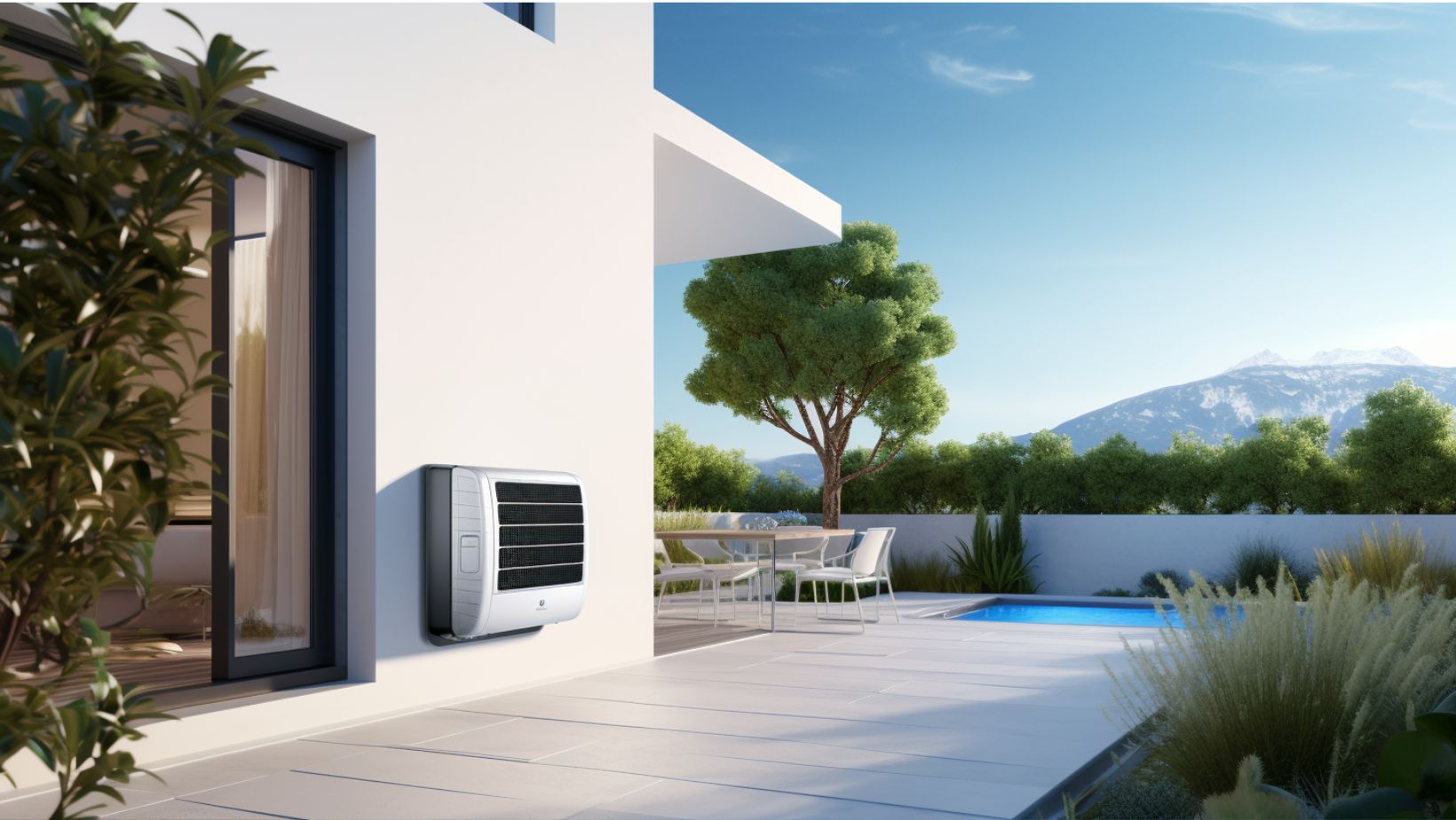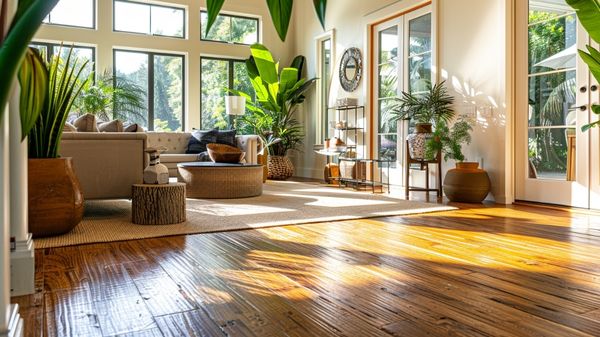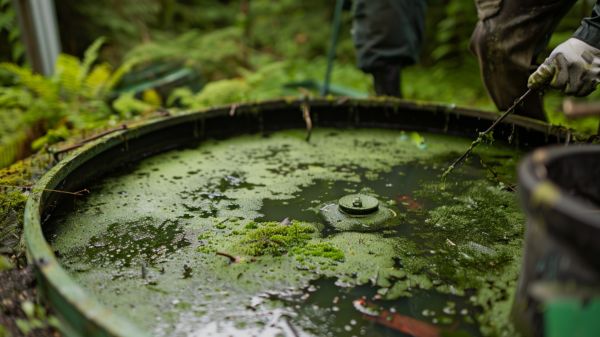Are you tired of feeling too hot in the summer and freezing in the winter? Look no further than air-source heat pumps! These amazing systems provide year-round comfort for your home, keeping you cozy when it’s chilly and cool when it’s scorching outside.
With options like ductless, ducted, and short-run ducted systems, you can find the perfect fit for your needs. Plus, installation is a breeze and energy savings are on the horizon.
Say goodbye to inconsistent temperatures and hello to the belonging you’ve been searching for.
Key Takeaways
- Air source heat pumps provide all-season comfort and can be used for both heating and cooling.
- They offer flexible installation options, including ductless, ducted, and short-run ducted systems.
- Most air source heat pumps are split-systems, with one coil inside and one outside, but packaged systems are also available.
- It is important to consider factors such as energy efficiency ratings, climate-specific requirements, and potential cost savings when selecting a heat pump.
Types of Air-Source Heat Pumps
Most air-source heat pumps are split-systems, which means they have one coil inside the house and one coil outside. The indoor coil is connected to the outdoor unit by refrigerant lines. This setup allows the heat pump to transfer heat from the outside air to the inside during winter, and from the inside air to the outside during summer.
On the other hand, packaged systems have both coils and the fan located outdoors. These systems are typically used in situations where there is limited space indoors, such as in apartments or condos. The heated or cooled air is then distributed throughout the house through ductwork.
It’s important to note that air-source heat pumps usually require auxiliary heat, such as electric resistance heaters or a furnace, to supplement their heating capacity during extremely cold temperatures. This is because the heat pump’s efficiency decreases as the outdoor temperature drops.
Overall, there are two main types of air-source heat pumps: split-systems and packaged systems. Understanding the differences between them can help you choose the right one for your home.
Ductless Vs. Ducted Vs. Short-Run Ducted
When considering the installation of a heat pump, it is important to evaluate the advantages and disadvantages of different types of systems: ductless, ducted, and short-run ducted systems.
Ductless applications have the advantage of requiring minimal construction. They are often installed in additions and only require a small hole through the wall to connect the outdoor condenser and indoor heads.
On the other hand, ducted systems use existing ventilation systems or are suitable for new constructions. They require ductwork for installation, which may add to the overall cost and complexity of the project.
Short-run ducted systems offer a combination of both ducted and ductless systems. They use large ductwork in a small section of the house, complemented by ductless units in the rest of the house. This option provides flexibility and efficiency, especially if you have specific heating and cooling needs in certain areas of your home.
Therefore, depending on your specific needs and the layout of your home, you can choose the most suitable system. It is important to consider factors such as cost, installation requirements, and overall efficiency when making your decision.
Split Vs. Packaged
If you’re considering a heat pump, you’ll need to decide between a split-system or a packaged system. The main difference between the two is the location of the coils and the fan.
In a split-system, one coil is installed inside the house while the other is placed outside. The supply and return ducts connect to the indoor central fan.
On the other hand, a packaged system has both coils and the fan located outdoors. Heated or cooled air is then delivered through ductwork.
When it comes to air source heat pumps, they are a cost-effective choice for heating and cooling in cold climates. However, they usually require auxiliary heat because their efficiency decreases as the temperature drops.
Air source heat pumps work by transferring heat between indoor and outdoor air, providing both heating and cooling capabilities.
Multi-Zone Vs. Single-Zone
Single-zone systems are designed for smaller spaces and consist of one outdoor condenser and one indoor head.
Multi-zone installations connect two or more indoor coils to one outdoor condenser. Multi-zone systems allow for heating or cooling of individual rooms, hallways, and open spaces, providing personalized comfort throughout the home. These systems are also referred to as multi-head vs. single-head and multi-port vs. single-port.
Single-zone systems are simpler and designed for smaller spaces, making them a cost-effective option for homeowners with limited heating and cooling needs. On the other hand, multi-zone systems offer more flexibility and control, allowing for customized temperature settings in different areas of the house.
Whether you choose a single-zone or multi-zone system, both types of air source heat pumps provide efficient and reliable heating and cooling solutions for your home. Additionally, some air source heat pumps can also be used as an air source heat pump water heater, providing hot water for your household needs.
Selecting a Heat Pump
To select the right heat pump for your home, consider the efficiency ratings, such as HSPF and SEER, displayed on the EnergyGuide label and look for the ENERGY STAR label.
The EnergyGuide label provides information about the heat pump’s performance and efficiency. The Heating Season Performance Factor (HSPF) indicates the heating efficiency, while the Seasonal Energy Efficiency Ratio (SEER) indicates the cooling efficiency. Higher HSPF and SEER ratings indicate higher cost but potential energy savings.
The ENERGY STAR label signifies that the heat pump meets specific energy efficiency guidelines set by the Environmental Protection Agency. When selecting a heat pump, it’s important to consider your climate-specific requirements to ensure optimal performance and energy savings.
Key Considerations for Heat Pump Installation
Now that you understand the process of selecting a heat pump, let’s dive into the key considerations for heat pump installation. These factors will help you determine the most suitable heat pump for your home.
| Consideration | Description |
|---|---|
| Heating Fuel | Determine the type of heating fuel currently used in your home. This will help you understand the potential cost savings of switching to a heat pump. |
| Ductwork | Assess the presence and effectiveness of ductwork in your home. If you have existing ductwork, a ducted heat pump system may be the best option. If not, you can consider a ductless or short-run ducted system. |
| Climate Zone | Identify the climate zone you live in. Different heat pump models are designed for specific climate zones, ensuring optimal performance and efficiency. |
| Cost Savings | Consider the potential cost savings of switching to a heat pump. While upfront costs may be higher, heat pumps can save you money on utilities in the long run. |
| Performance and Efficiency | Evaluate the performance and efficiency ratings of different heat pump models. Look for higher HSPF and SEER ratings, as they indicate better energy efficiency and potential savings. |
Benefits of Air Source Heat Pumps
Air source heat pumps provide consistent temperature control and operate quietly, making them a convenient and efficient option for homeowners. These heat pumps offer numerous benefits that can enhance your comfort and save you money.
By switching to air source heat pumps, you can enjoy steady temperatures and humidity levels throughout the day, eliminating hot or cold spots in your home. Additionally, these heat pumps improve indoor air quality by filtering out allergens and pollutants. They are also energy-efficient and environmentally friendly, reducing your carbon footprint.
In certain states, air source heat pumps are eligible for rebates and incentives, further increasing their cost-effectiveness. With their versatile installation options and the ability to cool as well as traditional central ACs, air source heat pumps are an excellent choice for homeowners looking for reliable temperature control and optimal comfort. You can explore professional websites like https://yorkshireheatingrenewables.co.uk/ to get in touch and learn more about installation, maintenance, and the latest energy-efficient solutions for your home.
Advantages and Disadvantages
One advantage of air source heat pumps is their ability to provide both heating and cooling, making them a versatile option for homeowners.
With an air source heat pump, you can enjoy comfortable temperatures throughout the year, regardless of the season. This all-in-one system absorbs heat from the indoor air and releases it outdoors during the cooling mode, effectively cooling your home.
During the heating mode, it extracts low-temperature heat from the outdoor air and brings it indoors, providing warmth. This dual functionality eliminates the need for separate heating and cooling systems, simplifying maintenance and reducing costs.
Air source heat pumps are also energy-efficient and environmentally friendly, helping you save on utility bills while reducing your carbon footprint. With their ability to deliver steady temperatures, improve indoor air quality, and operate quietly, air source heat pumps provide a reliable and comfortable living environment for homeowners.
Cost-Effectiveness
To determine the cost-effectiveness of upgrading to an air source heat pump, you should consider factors such as your location, existing heating options, and potential incentives available.
The cost-effectiveness of an air source heat pump depends on various factors. Firstly, your location plays a crucial role in determining the efficiency of the heat pump. Air source heat pumps work more efficiently in moderate climates, where the temperature doesn’t drop too low.
Additionally, the cost-effectiveness also depends on your existing heating options. If you currently rely on expensive fuel sources like oil or propane, switching to an air source heat pump can lead to significant savings in your energy bills.
Lastly, it’s essential to explore potential incentives available in your area that can offset the upfront installation costs and improve the overall cost-effectiveness of upgrading to an air source heat pump.
How Air Source Heat Pumps Work
Air source heat pumps transfer energy between indoor and outdoor environments, consuming less electricity compared to other heating systems. Here’s how they work:
- Absorption and Release of Heat: Air source heat pumps absorb heat from indoors during cooling mode and release it outdoors. During heating mode, they extract low-temperature heat from the outdoor air and release it indoors.
- Energy Efficiency: These heat pumps are more energy-efficient than traditional heating systems. They provide heating and cooling for entire houses or specific rooms.
- All-in-One Functionality: Air source heat pumps act as all-in-one heating and cooling systems. They absorb heat from indoors and release it outdoors during cooling mode, and vice versa during heating mode.
- Lower Electricity Consumption: Due to their energy-efficient design, air source heat pumps consume less electricity, making them a cost-effective option for maintaining comfortable indoor temperatures.
Frequently Asked Questions
How Much Does an Air Source Heat Pump Cost?
An air source heat pump can cost anywhere from $3,000 to $8,000, depending on factors like the size of your home and the type of heat pump you choose.
Are Air Source Heat Pumps Eligible for Tax Incentives or Rebates?
Yes, air source heat pumps are eligible for tax incentives and rebates in certain states. These incentives can help offset the upfront costs and make the installation of a heat pump more affordable for homeowners.
Can Air Source Heat Pumps Be Used in Commercial Buildings?
Yes, air source heat pumps can be used in commercial buildings. They provide efficient heating and cooling, saving on energy costs. With flexible installation options, they are a smart choice for maintaining a comfortable environment in your commercial space.
Are Air Source Heat Pumps Noisy When They Are Running?
Yes, air source heat pumps can be noisy when running. The noise level varies depending on the specific model and installation. However, advancements in technology have made them quieter compared to older models.
How Often Do Air Source Heat Pumps Need to Be Serviced or Maintained?
Air source heat pumps typically need to be serviced or maintained once a year. Regular maintenance helps ensure optimal performance, efficiency, and longevity of the system. It’s important to schedule professional maintenance to keep your heat pump running smoothly.
Conclusion
So, you’ve learned all about air-source heat pumps and their benefits. Now, you might be thinking, ‘Wow, these heat pumps sound like the perfect solution for my home!’ Well, guess what? You’re absolutely right! Air-source heat pumps are the epitome of efficiency and comfort.
Who needs those traditional systems when you can have consistent temperature control, energy savings, and easy installation? Sure, the upfront costs may be a tad higher, and extreme cold weather might pose a challenge, but hey, no pain, no gain, right?
Embrace the irony and embrace the future with air-source heat pumps!




